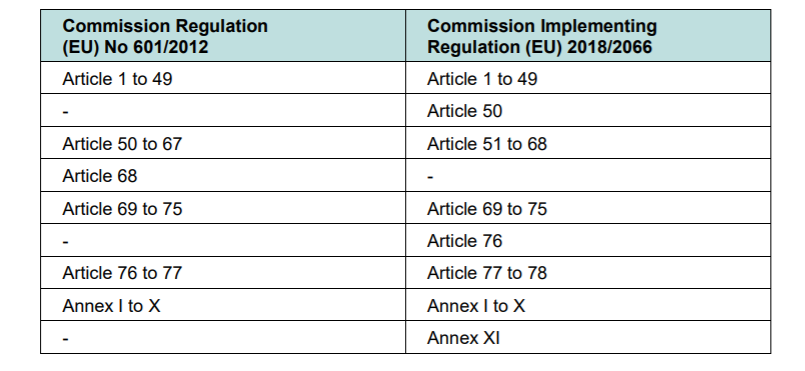EU ETS & CORSIA update from European Commission
07/02/2022
On 31st January 2022, the European Commission (EC) made an adjustment to the revised MRR and guidance on CORSIA, Brexit and Swiss linking. The changes done on MRR and AVR are presented below. The latest monitoring and reporting templates published by the EC are included below to download. The same templates can also be downloaded from European Commission's webpage.
What is new for Aircraft Operators?
The M&R Regulation was developed for harmonisation of the MRV requirements across all Member States applying the EU Emission Trading System. The MRR was revised for Phase 4 of the EU ETS (starting on 1 January 2021) taking into account extensive discussions with the Member States, gathering their experience during phase 3. The revision also included some elements relevant for CORSIA related monitoring and reporting.
Besides changes in the MRR, amendments to the EU ETS Directive also had to be taken into account for updating this guidance document. This includes in particular the scope changes due to the Linking agreement with the Swiss ETS. Readers who want to focus in particular on new elements of this guidance should especially note the following changes:
- The implementation of an MRV system for the purpose of CORSIA (ICAO’s global market-based measure) from 2021 through an implemented act. Aircraft operators have to monitor and report all international flights as explained in section 3.1.5.
- The Linking Agreement with the Swiss ETS – see section 3.1.3;
- The clarification of the scope regarding flights from and to the UK following Brexit (see section 3.1.4);
- New eligibility thresholds for aircraft operators to apply simplified MRV approaches – see section 5.6 (e.g. aircraft operators with emissions lower than 3 000 tonnes of CO2 per year from intra-EEA flights).
- Non-commercial aircraft operators emitting less than 1 000 tonnes of CO2 per year are exempted from the EU ETS and therefore from reporting their emissions until 2030; for details see section 3.2.2.
- The determination of the density of fuels has been simplified – section 5.4.5;
- Tiers have been abandoned for the monitoring of most parameters. The tier system is now only applicable to t-km data – section 5.3;
- The MRR uses the same definitions for biomass and biofuels as the Directive on Renewable Energy Sources (RES-D). Consequently, the sustainability criteria established by the RES-D must be applied where relevant in order to apply an emission factor of zero to such biomass. This topic – previously covered in detail in a separate guidance document (see section 2.3 for where to find other guidance documents) – has now been included in Annex I (section 7.1) to make this document more complete for aircraft operators.
- From 2022, the MRR aligns the requirements on biomass and biofuel monitoring with the requirements of the revised RES-D, the so-called RED II5. At the time of writing this current update of this guidance document, relevant implementing and delegated acts under the RED II are under development.

> Click here to see the latest MRR guidance document
The Accreditation and Verification Regulation (AVR) key guidance note no. II.6 - Verification report
Below are the updates that were done on 31st January 2022:
- Updates to the new Accreditation and Verification Regulation (AVR) 2018/2067 that was amended by the Commission Regulation 2020/2084. This includes revisions for the fourth trading period
- Integration of verification reporting for aircraft operators that fall under EU ETS and Swiss ETS
Latest Monitoring and Reporting templates:
> Click here to download the Monitoring Plan (EU ETS and CORSIA) template
> Click here to download the latest Annual Emissions Report (AER) template
> Click here to download the Verification Report (VR) template
> Click here to download the Improvement Report template
Back to all Verifavia News







